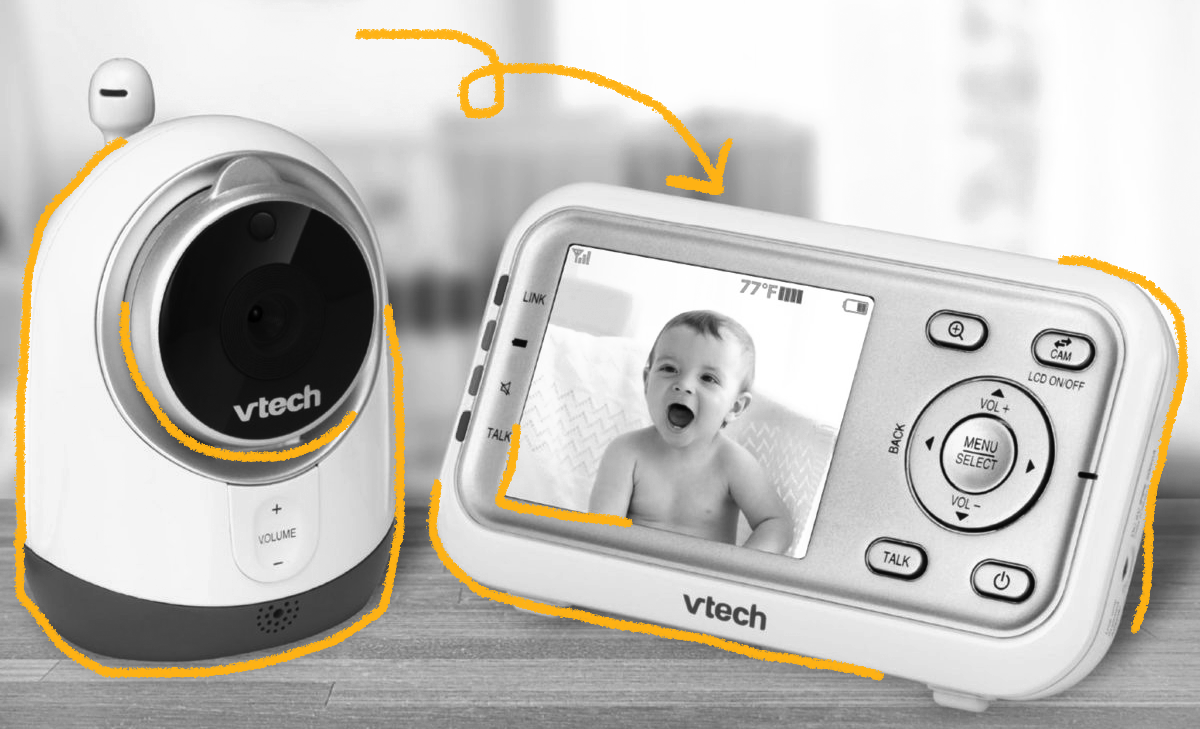It Was Inspired by a Tragic Event
The history of the baby monitor is connected to another historical event – the kidnapping of the Lindbergh baby from the family nursery in 1932. The tragedy was widely reported in the American media and caused many parents to worry for their own children. Eugene F. MacDonald Jr., the president of a company called Zenith Radio Corporation, was similarly affected. He wanted to create a device to help prevent similar incidents. He began experimenting on his own by cobbling together a crude device that allowed him to listen to what was happening in his daughter’s room. It was only after confirming that the concept was possible that he handed the task off to his team of engineers at Zenith.
It Was Created by a Team of Engineers and an Artist
The Zenith engineers came up with a two-part set. The “Guardian Ear” was a transmitter that could be plugged in next to a child’s crib. The “Radio Nurse” served as the receiver, and it was intended to be placed next to parents or caregivers to allow them to listen in on what was happening in the nursery. The “Radio Nurse” receiver was designed for Zenith by a young Isamu Noguchi in 1937. Noguchi was a Japanese American sculptor and designer who later became famous for his mid-century modern décor. He designed the receiver out of Bakelite, an early plastic, and Marc Greuther, the Chief Curator at The Henry Ford, was quoted saying that the design was “an impressive abstract form that managed to capture the essence of a benign, yet no-nonsense, nurse.”
The First Model Didn’t Catch On
The first baby monitor didn’t catch on, however, and was not considered a commercial success. This was likely due to the high price of the device, which debuted in 1938 and cost between $19.95 and $29.95 – a huge sum of money at the time. It also suffered from interference, often picking up radio signals from other sources. It also struggled to handle loud volumes. Despite its lack of commercial success, Zenith’s two-part baby monitor still played an important role as it paved the way for later devices.

It Gained Popularity in the 1980s
Baby monitors began to reappear again in the 1970s, when Fernandez Aguado Rafael of Spain filed a patent for an intercom-like system intended to monitor babies and patients. In 1979, James K. Frost filed a patent in Australia (and later in the US) for a breath monitoring device. But it wasn’t until the 1980s that baby monitors really began to take off. Fisher-Price began manufacturing analog baby monitors and their models ranked among the top sellers throughout the decade. In 1987, Safety 1st released its own baby monitor and was ranked as the best-selling brand in 1993. Other baby brands also jumped on the bandwagon.
Scary News Stories and Changed Regulations Fueled Its Adoption
In the 1990s, the demand for baby monitors skyrocketed. In the early part of the decade, several news channels revealed footage showing the gross misconduct of caregivers toward children while their parents were away. Baby monitors that were video-capable, including “nanny-cams,” began to emerge as concerned parents looked for ways to keep their children safe. FCC regulations also changed during the 90s, allowing for the creation of baby monitors that could transmit at a range of up to 3 miles. The higher frequency bands that facilitated this greater range of transmission also resulted in less interference, which also helped make the devices more popular.
Baby Monitors in the Digital Age
The first baby monitor with playback and two-way communication was invented in 1997 by Cynthia Altenhofen. Her device allowed parents to record a soothing message that could be played back to the baby; it was the first baby monitor with a message storage option. In the 2000s, prices came down significantly and video baby monitors gained even more popularity than the burgeoning trend had garnered in the 1990s. Since 2000, many wi-fi capable baby monitors have debuted; while they offer a host of convenient features, there have been stories of these wi-fi enabled devices being hacked. Smart baby monitors have also entered the market, although the American Academy of Pediatrics (AAP) currently cautions parents and caregivers against using these devices. Some baby monitors on the market today are even capable of syncing with smart home systems! From digital baby monitors to the more traditional analog devices, parents today have a plethora of monitoring options to choose from.



